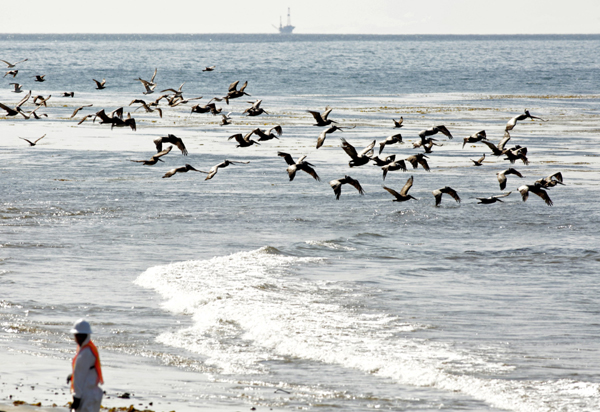California oil spill takes toll on marine mammals, birds
(Agencies) Updated: 2015-05-27 09:29
 |
|
Pelicans fly near a crew member at Refugio State Beach after a massive oil spill on the California coast in Goleta, California May 22, 2015. [Photo/Agencies] |
The spill left an oil slick stretching for more than 9 miles (14.5 km) along the coast and forced the indefinite closure of two popular beaches. The area also has been placed off-limits to fishing and shellfish harvesting.
The stricken region lies at the edge of a national marine sanctuary and underwater preserve that is home to whales, dolphins, sea lions and other marine mammals, along with some 60 species of sea birds and over 500 species of fish.
Rescued marine mammals were being sent to SeaWorld San Diego for cleansing and rehabilitation by veterinary staff there.
"Our team is working very, very hard, doing everything they can to give these animals a second chance at life," said David Koontz, a spokesman for the marine theme park.
He said it generally takes a number of days for crews to fully clean each animal, painstakingly scrubbing them with toothbrushes and a special degreasing soap.
Sea lions were already reported to be under stress well before the spill, with record numbers - more than 3,100 so far this year, most of them pups - washing up starving and stranded on Southern California beaches. Biologists have linked the mass strandings to warming ocean temperatures that have disrupted the pinnipeds' usual food supply.
The week-old oil spill ranks as the biggest to hit the ecologically sensitive shoreline northwest of Los Angeles since a 1969 blowout dumped up to 100,000 barrels (4.2 million gallons or 15.9 million liters) of oil into the Santa Barbara Channel.
That much larger spill killed thousands of sea birds and other wildlife and helped spark the modern US environmental movement.






